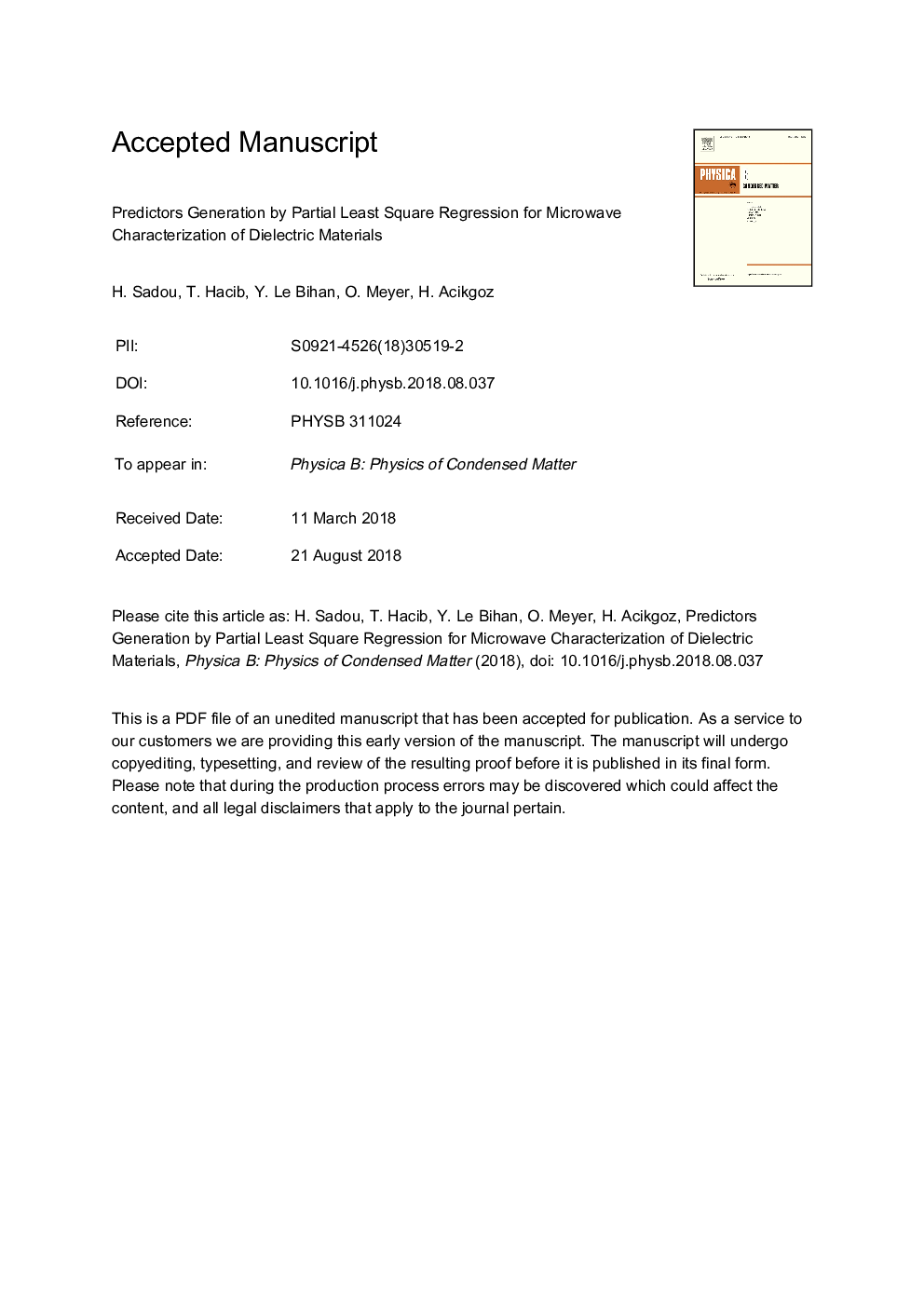| Article ID | Journal | Published Year | Pages | File Type |
|---|---|---|---|---|
| 10148042 | Physica B: Condensed Matter | 2018 | 26 Pages |
Abstract
In this paper, the microwave characterization of dielectric materials using open-ended coaxial line probe is proposed. The measuring cell is a coaxial waveguide terminated by a dielectric sample. The study consists in extracting the real and imaginary part of the relative dielectric permittivity (εâ¯=â¯Îµâ²-jε'') of the material under test from the measurements of the probe admittance (Ymes(f)â¯=â¯Gmes(f)+jBmes(f)) on a broad band frequency (f between 1â¯MHz and 1.8â¯GHz), hence a direct and inverse problems have to be solved. In order to build a database, the direct problem is solved using Finite Elements Method (FEM) for the probe admittance (Y(f)â¯=â¯G(f)+jB(f)). Concerning the inverse problem, Partial Least Square (PLS) Regression (PLSR) is investigated as a fast, simple and accurate inversion tool. It is a dimensionality reduction method which aims to model the relationship between the matrix of independent variables (predictors) X and the matrix of dependant variables (response) Y. The purpose of PLS is to find the Latent Variables (LV) having the higher ability of prediction by projecting original predictors into a new space of reduced dimension. The original inverse model has only three predictors (f, G and B) but is nonlinear, so inspired by the extended X bloc method, more predictors have been created mathematically from the original ones (for example: 1/f2, B/f2, GB, 1/B, G/f, f2G, fG2B, f2G2B2, ⦠etc) in order to take into account the nonlinearity, whence the appellation Predictors Generation Partial Least Square Regression (PG-PLSR). Inversion results of experimental measurements for liquid (ethanol, water) and solid (PEEK (Polyether-ether-ketone)) samples have proved the applicability and efficiency of PG-PLSR in microwave characterization. Moreover, the comparison study in the last section has proved the superiority of PG-PLSR on Multi-Layer Perceptron Neural Network (MLP-NN) in terms of rapidity, simplicity and accuracy.
Related Topics
Physical Sciences and Engineering
Physics and Astronomy
Condensed Matter Physics
Authors
H. Sadou, T. Hacib, Y. Le Bihan, O. Meyer, H. Acikgoz,
